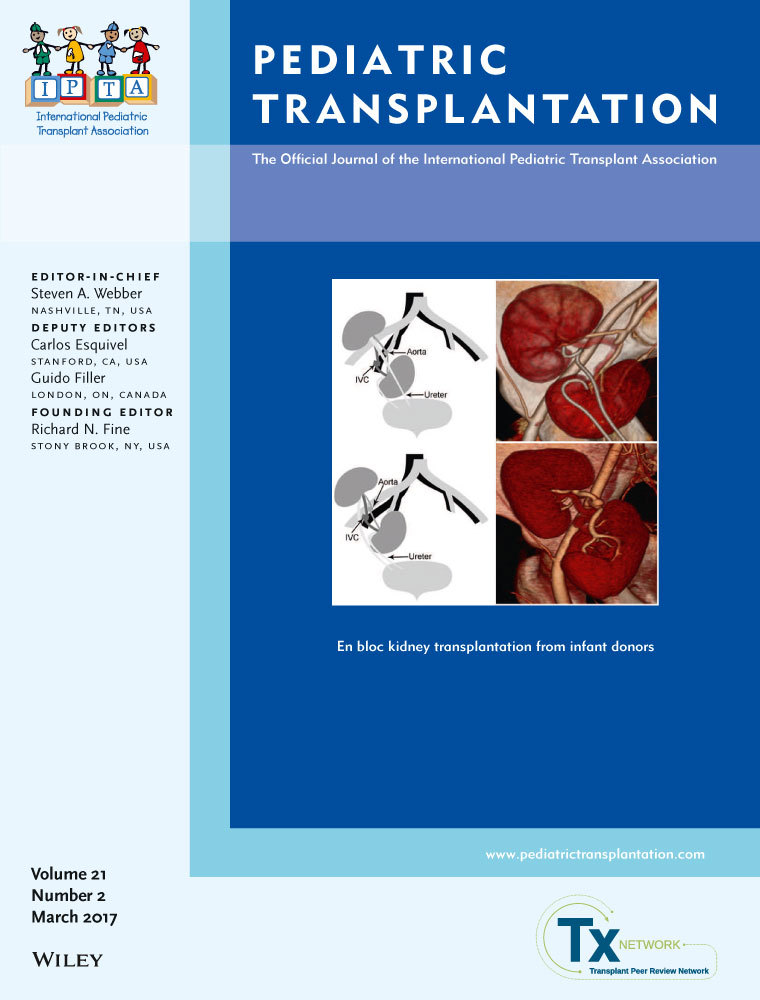Barriers to live donor kidney transplants in the pediatric population: A single-center experience
Abstract
A decrease in live donor pediatric kidney transplants has occurred in the United States. This study investigates barriers that may influence access to live donor kidney transplants in children. Retrospective chart review was conducted for 91 children (69% male, mean age 11.9 years) who underwent pretransplant workup from 2005 to 2015 at an urban pediatric hospital. Fifty-four percent were African American, 32% Caucasian, 8% Arabic, 3% Hispanic, and 3% Others. Government-sponsored insurance (Medicaid/Medicare) was utilized by 73%, and 54% had dual caregivers. Only nine of 68 kidney transplants were live donor transplants. Live donor transplants (11%) were significantly (P=.008) lower than deceased donor transplants (59%) in African Americans. Private insurance was reported by 56% of live donor recipients and 25% of deceased donor recipients. Among live donor recipients, 78% were from dual caregiver families. Caregiver, health-related, financial, and religious/cultural barriers to live donor transplants were reported, several of which may be amenable to positive intervention.




